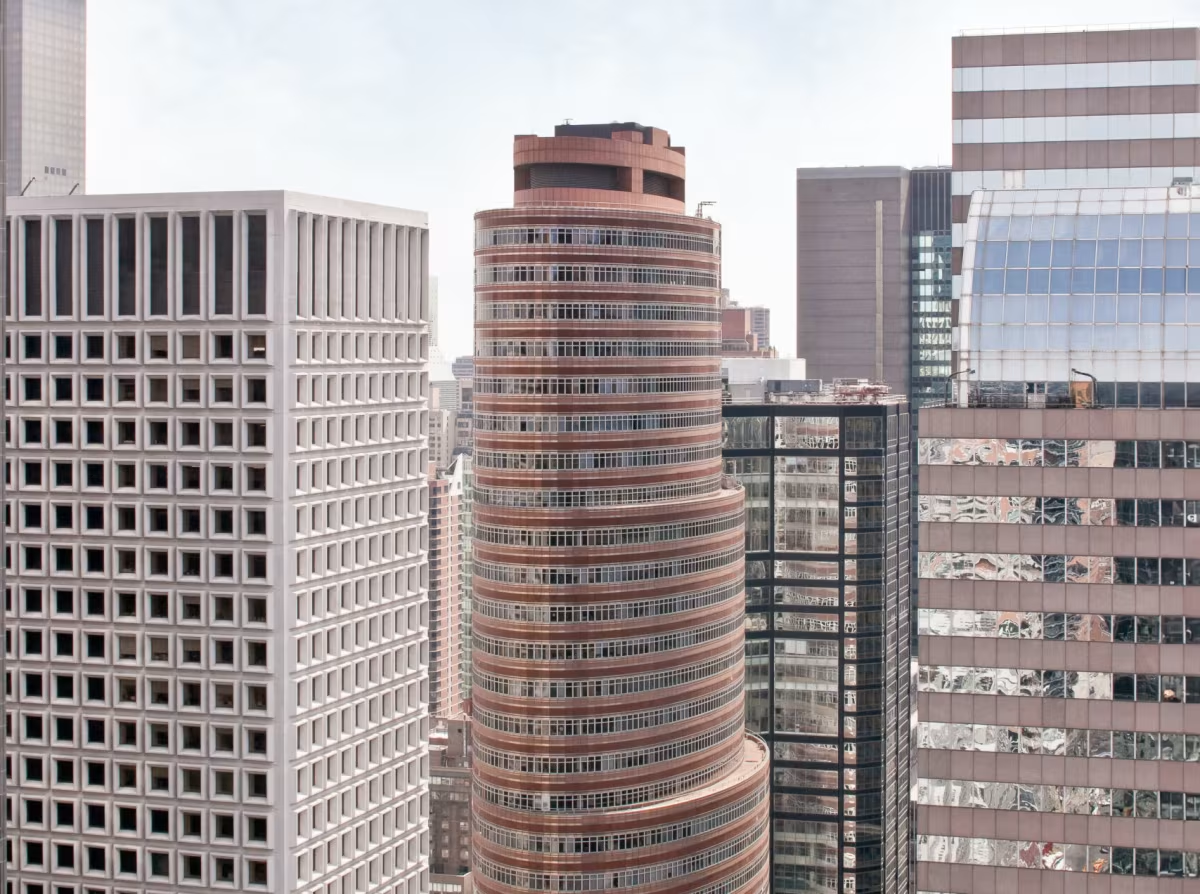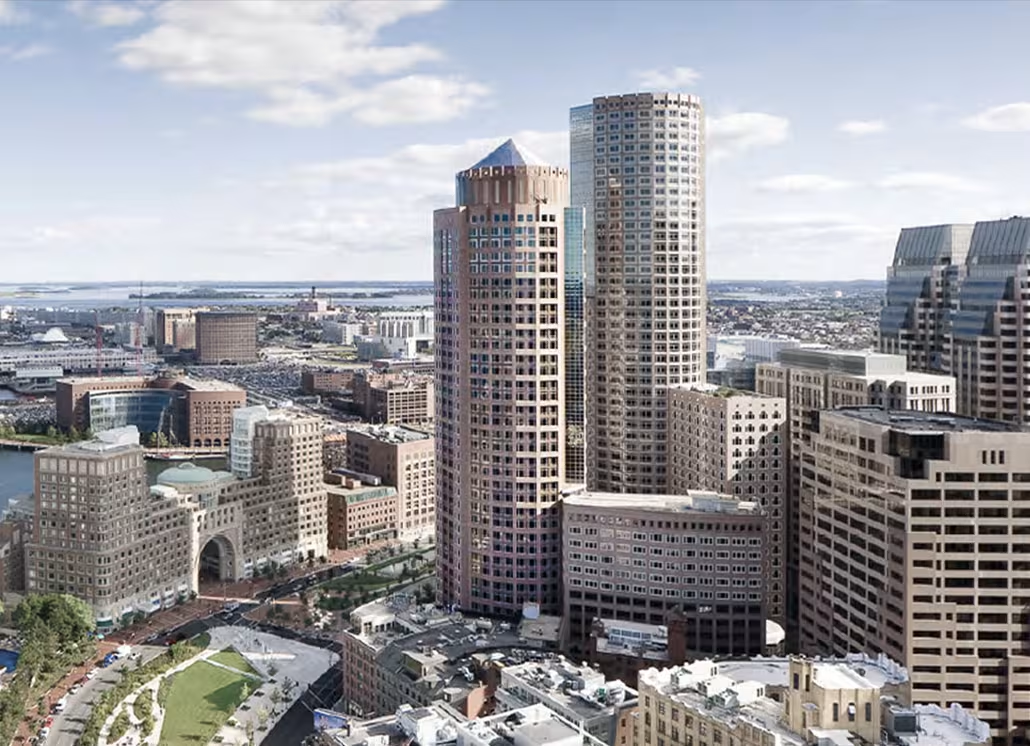Lipstick Building vs Two International Place Building


Comparing the Lipstick Building and the Two International Place Building is compelling because they were both designed by Johnson/Burgee Architects, yet they stand in different cities (New York, NY and Boston, MA), and were completed more than 6 years apart.
What this will allow us to see, is how the same firm's approach adapted to different places at roughly the same time (6 years isn't that much time when it comes to urban context and architecture).
Height & Size
The Two International Place Building is clearly the larger tower of the two, both in terms of height and number of floors. It rises to 538ft (164m) with 35 floors above ground, while the Lipstick Building reaches 453ft (138m) with 34 floors above ground.
Of course, each project may have faced different briefs or regulatory constraints, which we don't really know about and could also explain the outcome.
Architectural Style
Both the Lipstick Building and the Two International Place Building were designed in line with the aesthetic conventions of the Postmodernism style.
The Two International Place Building was designed at a moment when the Postmodernism style was already in decline, making it more of a lingering expression of the movement. In contrast, the Lipstick Building was built when the style still carried greater cultural weight.
Uses
Both the Lipstick Building and the Two International Place Building were designed to serve as commercial towers, and that has remained their main use since their completion, serving similar roles in the urban fabric.
Structure & Facade
Both towers share the same structural solution, a Framed Tube In Tube system.
A tube-in-tube system combines a reinforced central core with a perimeter of columns connected by floor slabs. This arrangement creates a stiff structure that resists both vertical and lateral forces efficiently.
However, when it comes to the facade, both buildings use different approaches. The Lipstick Building uses a Curtain Wall facade, while the Two International Place Building uses a Modular facade.
A Curtain Wall facade like the one seen in the Lipstick Building uses a lightweight glass curtain wall hung from the structure, while a modular facade like the one seen in the Two International Place Building employs prefabricated panels, often mixing solid surfaces with smaller windows.
| Lipstick Building | Two International Place Building | |
|---|---|---|
| Johnson/Burgee Architects | Architect | Johnson/Burgee Architects |
| 1983 | Construction Started | 1987 |
| 1986 | Year Completed | 1992 |
| Postmodernism | Architectural Style | Postmodernism |
| Commercial | Current Use | Commercial |
| 34 | Floors Above Ground | 35 |
| 138 m | Height (m) | 164 m |
| Framed Tube In Tube | Structure Type | Framed Tube In Tube |
| Steel | Vertical Structure Material | Steel |
| Concrete | Horizontal Structure Material | Reinforced Concrete |
| No | Facade Structural? | Yes |
| Gerald D. Hines | Developer | The Chiofaro Company |
| Irwin Cantor | Structural Engineer | McNamara/Salvia, Inc. |
| NY | State | MA |
| New York | City | Boston |
| 885 Third Avenue | Address | 2 International Place |